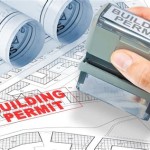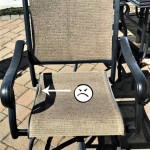How to Clean Paving Slabs on Patios and Concrete Driveways
Paving slabs form the surface of patios and driveways in many homes, and with time, they can become dirty and lose their appeal. But you can restore their pristine condition without much effort by following the right cleaning techniques. Here's a comprehensive guide to help you clean paving slabs on your patio or concrete driveway effectively.
Materials Required:
- Pressure washer (electric or gas-powered)
- Stiff-bristled brush or broom
- Cleaning solution (commercial or homemade)
- Bucket
- Garden hose
- Safety goggles
Step 1: Prepare the Area
Clear away any loose debris, such as leaves or stones, from the slabs. This will make the cleaning process more manageable. If you have outdoor furniture or potted plants, move them to a safe spot.
Step 2: Choose a Cleaning Solution
Various commercial cleaning solutions are available for paving slabs. Alternatively, you can make your own by mixing one part white vinegar or bleach with four parts warm water. Vinegar is a mild acid that effectively removes dirt and grime, while bleach is a powerful disinfectant ideal for removing mold and mildew.
Step 3: Apply the Cleaning Solution
Apply the chosen cleaning solution to the paving slabs, ensuring it covers the entire surface. Use a stiff-bristled brush or broom to work the solution into the slabs, paying extra attention to stubborn stains or dirt. Let the solution dwell for a few minutes, allowing it to penetrate the dirt and loosen it.
Step 4: Pressure Wash
This step is optional but highly recommended for deeper cleaning. If you have access to a pressure washer, set it to a moderate pressure (around 1200-1500 PSI) and hold the nozzle at a slight angle to the surface. Start from one corner and gradually work your way across the slabs, overlapping slightly with each pass. The pressure washer will effectively remove all dirt, grime, and loose material from the slabs.
Step 5: Rinse Thoroughly
After pressure washing (or brushing), rinse the paving slabs thoroughly with a garden hose. This will remove any remaining cleaning solution and dirt particles. Use a stiff-bristled brush to remove any stubborn dirt that may remain.
Step 6: Allow to Dry
Once the paving slabs are rinsed, allow them to dry completely. This may take several hours or even overnight, depending on the weather conditions. Avoid walking on the slabs while they are still wet, as this can leave footprints or damage the surface.
Step 7: Seal (Optional)
To protect the paving slabs and extend their lifespan, consider applying a sealer after they have completely dried. A sealer will create a protective barrier on the surface, making it less prone to staining and easier to clean in the future. Choose a high-quality sealer designed for outdoor use and follow the manufacturer's instructions for application.
Tips for Maintaining Clean Paving Slabs:
- Regularly sweep or blow off loose debris to prevent dirt buildup.
- Clean up spills and stains promptly to avoid permanent discoloration.
- Consider using a mild cleaning solution on a regular basis to maintain the appearance of the slabs.
- If mold or mildew forms, treat it with a bleach solution to remove it.
- Seal the paving slabs every few years to protect them and extend their lifespan.

How To Clean Patio Slabs Minster Paving

Five Simple Ways To Clean Patio Slabs Without A Pressure Washer

Give Your Patio Or Driveway Paving A Winter Clean With This Guide

How To Clean Paving Slabs Without A Pressure Washer Deluxe House

How To Clean A Concrete Patio

Pressure Washing A Filthy Crazy Paving Driveway And Garden Patio Covered In Grime

How To Clean Paving Patios A Comprehensive Guide Awbs

How To Clean Patio Slabs Kärcher International

How To Keep Your Paving Clean Driveway

Patio Renovation N Sandstone Concrete Paving Cleaning Service Kent
See Also








